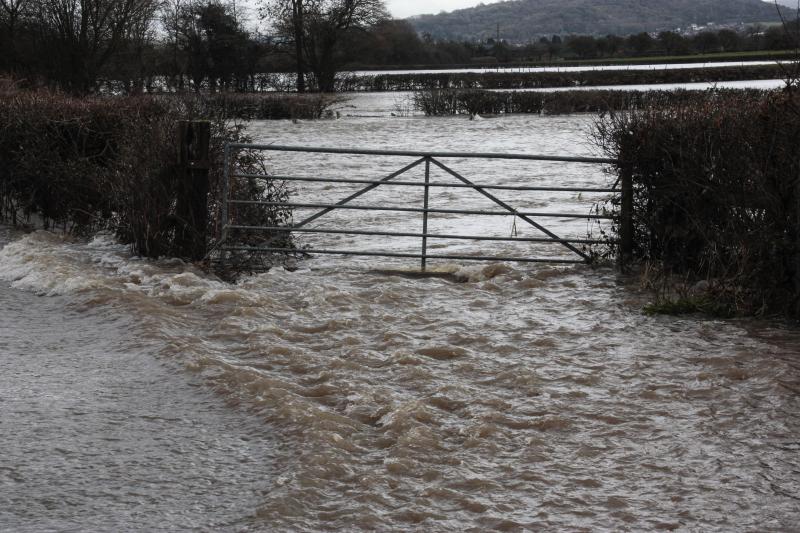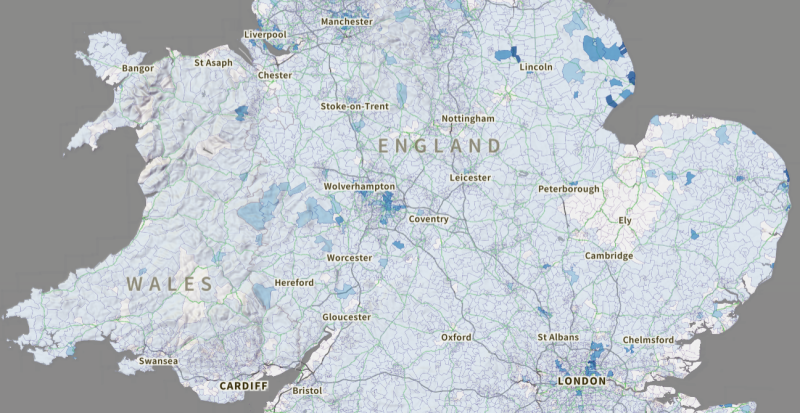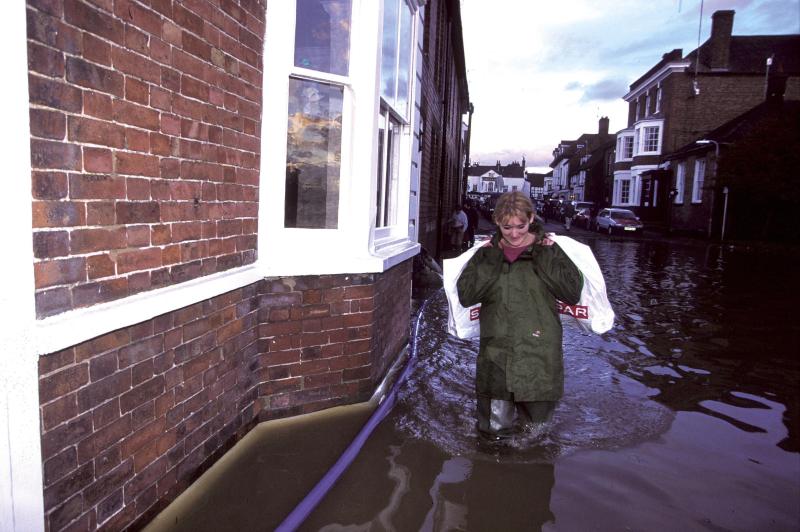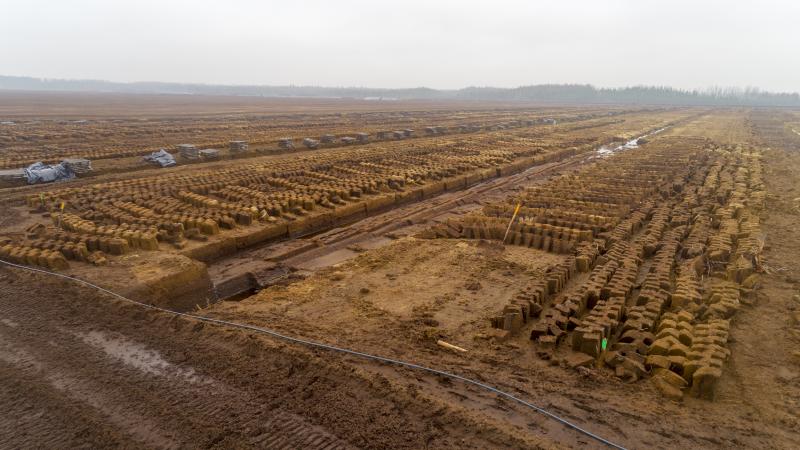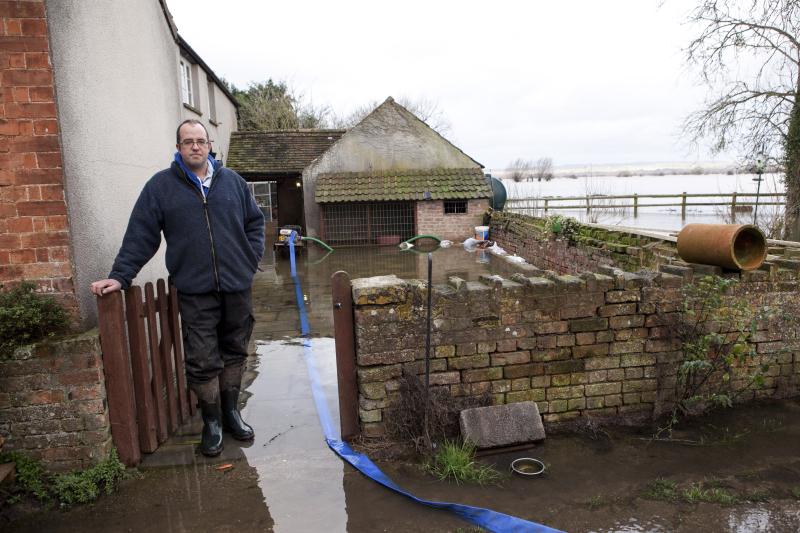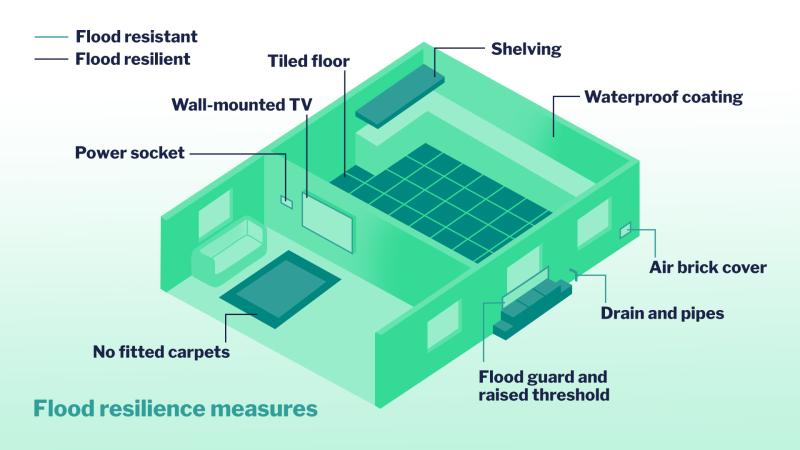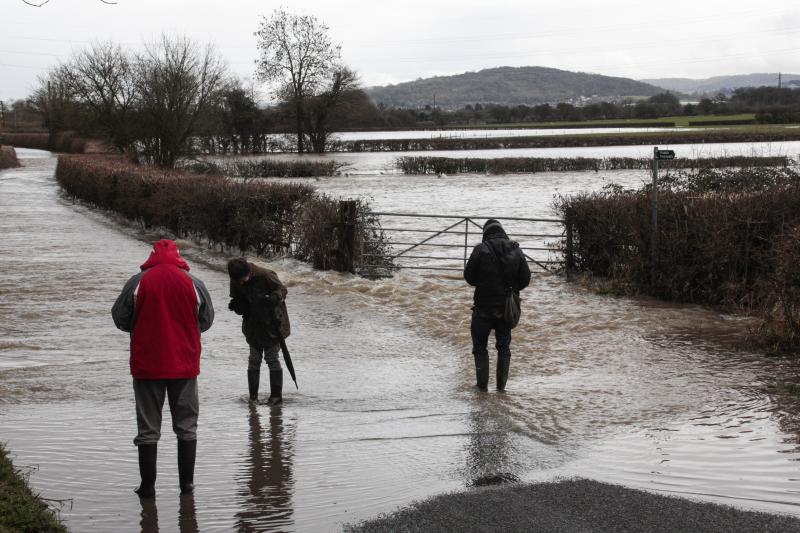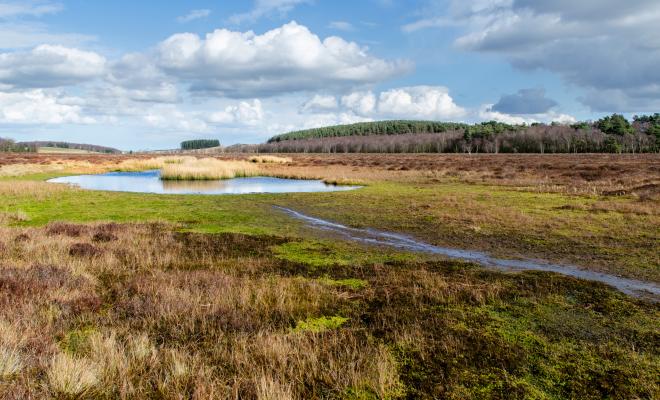Mike Childs29 Apr 2023
Summary
The weather is becoming windier, wetter and wilder around the world as climate scientists have predicted and England too is becoming more prone to extreme weather events. In the past decade we have seen more flooding, both in our cities and in the countryside, whether from intense rainfall, increased river flow or sea surges. Even with advance warning systems in place and improved flood defences, we need to become much more resilient to flooding and make use of a broader suite of flood management tools and the planning system to address risk.
Research for Friends of the Earth by the University of Manchester has identified that over 700,000 people in the 10% most socially vulnerable neighbourhoods are at risk of river, coastal, or surface water flooding because of their location and a probable lack of flood defences, with people of colour disproportionately affected.
Over 5.2 million homes and properties in England are currently at risk. Flooding often has a worse impact on lower-income households who cannot afford to make their homes flood-resistant or the insurance premiums to cover flooding. Flooding can cause mental anguish for anyone who has suffered irreparable loss that can last for years. Some people are more severely affected than others because of factors other than income, for example loss of community cohesion.
Natural flood management is increasingly recognised as a vital tool for flood defence and almost always achieves multiple environmental benefits. But not enough emphasis has been placed on restoring nature as part of reducing flood risk. Such measures include the full restoration of peatlands and sea marshes, tree planting, reintroduction of beavers in upper catchments, and increasing green spaces and water storage areas in urban areas, including the removal of hard surfacing to enhance drainage.
The government needs to give high priority to this approach while also supporting householders to make their homes more flood-resistant through grants and insurance schemes, to which insurance companies should also contribute – making homes flood resistant is far cheaper than pay-outs for flood damage.
Is flooding getting worse?
Flooding causes misery and hardship everywhere. In many developing countries without the resources to build defences, and where the weather can be more extreme, the impact can be devastating. For example, in 2020 over 2,000 people died in flooding in India and over 4 million were displaced and in 2022 more than 33 million people were affected by the floods in Pakistan. But even in our relatively wealthy nation, people have died because of flooding and England is becoming more prone to surprise flooding events. The lack of early warning systems was largely responsible for the 307 deaths in 1953 and 100,000 in 1099 due to coastal sea surges. But even with today’s better flood defences and advance warning systems, flooding still has a significant impact. For example:
- More than 4,600 properties flooded in 2019 and a cost of £333 million
- The 2015-16 floods cost £1.6 billion, with 21,000 properties flooded
- The English National Study of Flooding and Health found flooding significantly increases mental health problems, with stress and depression increasing by four-fold or more and lasting for more than two years.
The Climate Change Committee – the government’s official advisors – warn that the weather is getter wetter, windier and wilder.
Why is flooding getting worse?
The IPCC – the group of the world’s scientists that advises governments – says that humans have warmed the planet at an unprecedented rate. As a result, sea levels have risen faster over the past 100 years than for at least 3,000 years and that the frequency and intensity of heavy precipitation events have increased. It says that with every increment of global warming, extreme weather events will get progressively worse and more frequent. This is because a warmer atmosphere can hold more water vapour and release it in more intense downpours.
Over the past 40 years rainfall has been steadily increasing in the UK and it is now more than 7% wetter than it used to be. Sea levels have risen by 1.6cm. These changes don’t seem like much, but averages mask extremes. It is the intense rainfall events and storms in both summer and winter that cause most damage.
In the future, we are likely to be facing even more dramatically extreme weather. Reduced arctic ice cover may lead to radical changes to the jet stream – which is a major influence on England’s weather - or warming could lead to much greater sea level rise of 1-2 metres by 2100 as icecaps melt leading to significant loss of land to the sea and much greater levels of coastal flooding.
But additional flooding is not just a result of climate breakdown. We have also damaged England’s resilience to flooding by degrading the environment. By draining peat bogs, removing hedgerows, destroying salt marshes, concreting green spaces in urban areas and building on flood plains we have undermined the ability of the natural environment to cope.
How many homes are at risk and who is most vulnerable?
The Environment Agency says over 5.2 million homes and properties in England are at risk from flooding and coastal erosion. Yet only a third of people living in flood prone areas believe their property is at risk. These numbers will rise because in 2021 alone more than 5,000 new homes have been approved for construction on flood plains.
Professor Sarah Lindley and colleagues at the University of Manchester carried out research for Friends of the Earth to map which communities in England are vulnerable and disadvantaged by flooding - and extreme heat - and which of these are most socially vulnerable due to demographics (e.g. age, income, disability, etc) and other social, community and environmental factors.
The research identified 2,974 socially vulnerable neighbourhoods in England at risk of flooding and likely to be without flood defences. 309 of these neighbourhoods are in Birmingham, 139 in Manchester, 111 in Liverpool, 94 in Bradford and 80 in Hackney. The remaining neighbourhoods are spread across 212 other local authority areas. There are 636,275 people within these neighbourhoods at risk according to the researchers.
A Friends of the Earth analysis of the Manchester data alongside ethnicity data finds that people of colour are disproportionately affected. 35% of the populations within the at risk and probably unprotected socially disadvantaged neighbourhoods are people of colour compared to an average of 14% across all neighbourhoods.
Our map identifies neighbourhoods at risk of flooding and also extreme heat. Visit the interactive map to see the risk of extreme weather near you.
Wherever it happens, flooding is a tragedy for individuals and communities. Even though most people survive all but the most extreme floods, property damage and the loss of irreplaceable personal effects such as photographs, keepsakes, furniture and ornaments, let alone pets or farm animals, can cause mental suffering that can last for years.
Can nature restoration help?
Nature restoration can help protect land and properties from flooding and reduce but not eliminate the need for flood defences, such as walls and barriers. This ‘natural flood management’ approach is increasingly recognised as a vital tool for flood defence. The Environment Agency has synthesized research into natural flood management and concluded that it works and almost always achieves multiple environmental benefits. Its research also provides numerous examples of these natural flood management approaches in action. Examples of natural flood management include:
- Restoring peatlands and soils – upland peatlands can act as giant sponges soaking up rainfall and releasing it slowly over time. But many of these peatlands have been degraded through drainage to make the habitat more suitable for rearing grouse for shooting or for the horticultural industry. Restoring peatlands and other soils also aids wildlife and the storage of carbon.
- Planting more trees – England is one of Europe’s least wooded nations. More of the right trees in the right places will help reduce flood risk by slowing the flow and enabling soils to absorb more water. Forest Research has estimated that trees provide £400 million a year worth of flood protection in Great Britain. The government’s England Trees Action Plan aims to plant more woodlands beside rivers and waterways but funding for the plan is a fraction of what’s needed. Trees can also provide ready material for installing leaky dams - branches across a stream holding back much of the water but allowing it to drain through the leaky dam over time.
- Creating more water storage capacity - the uplands and the lowland floodplains can store the large volumes of water that come with storms. Well managed floodplains can also be a haven for wildlife. This would only require losing very small amounts of agricultural land. Water can be stored by building more ponds and lakes and in urban areas storm water can be stored in water butts, including potential Wi-Fi enabled water butts that empty ahead of a storm.
- Restoring the natural flow of rivers – many rivers have sections where their flow has been unnaturally straightened and/or concreted riverbanks have been installed. This can speed the river flow and cause flood risks further downstream. Natural and restored riverbanks act as sponges by absorbing excess water and river meanders can store more water.
- Bringing back beavers – they are brilliant engineers and another natural ally in cutting flood risk, by building dams and reducing the volumes of water reaching communities downstream. A University of Exeter study shows how beavers increased water retention on the land reducing risk of flooding downstream.
- Increasing soak-away capacity – much of our urban areas have been concreted over. As surface water flooding is the greatest risk in many areas it makes sense to prevent the creation of more hard surfaces and replacing existing built-over surfaces with more porous materials where practicable.
- The National Infrastructure Commission has called for more action on sustainable drainage.
Examples of where natural flood management has been practised include:
- Forest of Dean: beavers reintroduced to the area are helping flood-proof and restore the land.
- Holnicote, Somerset: small scale measures across the catchment by the National Trust are holding water on the land and slowing its release and flow.
- Pickering, north Yorkshire: a combination of tree planting and leaky dams of woody debris is slowing the flow to reduce the risk from potential flood waters.
- Hebden Bridge, west Yorkshire: community group Treesponsibility has planted 250,000 trees across nearby valleys and hillsides. Woody "leaky" dams installed by Slow the Flow Calderdale are slowing the flow of water downstream.
Are the government's plans good enough?
The scale of floods in the future will be determined by government policies and actions in reducing greenhouse gas emissions to slow climate change. In the UK, as in other parts of the world, there is a massive gap between pledges to reduce emissions and policies to do so.
But however successful we are in cutting emissions, the UK must be much more resilient to extreme weather events – flooding, extreme heat and high winds. Being more resilient means more than spending money on flood defences. It should ensure that at-risk householders are prepared for flooding, can respond effectively and able to rebound quickly.
The reality is poorer households are less able to invest in their properties to make them more flood resistant (e.g., flood gates) and resilient (e.g., easier to clean and dry out). Some are less able to respond when flooding occurs, like those who are disabled or frail due to age or illness. And many are unable to bounce back after floods - around 50% of all renters may not have home contents insurance, and this rises to 61% of low-income renters.
The government is spending record amounts on flood defences (see below), but much more is needed to help vulnerable and disadvantaged at-risk households make their homes flood-resilient and ensure they are adequately insured so they can recover from a flood.
More grants for flood resistance and resilience
Friends of the Earth believes that grants should be available for people living in high-risk flood areas to make their homes more flood resistant and resilient. But the government’s flood resilience grant programme only provides a grant of £5,000 for homes that have already flooded, instead of funding resistance and resilience measures in advance of flooding.
The insurance industry should also be contributing to a national programme of making homes flood resistance and resilient, not least because prevention is much cheaper than the cost of flood damage recovery. On average insurers pay out £50,000 per property for flood damage, whereas the cost of basic flood resilience is around £4,000 while more complete flood resilience is around £12,000. The government says it is considering how the insurance industry can contribute through the Flood-Re Scheme.
Landlords should also be required to install flood resistance and resilience measures for rental properties that are at high risk of flooding.
Better insurance cover
Cheaper house contents insurance is made available to low-income householders in flood prone areas through a scheme called Flood-Re. This scheme raises a levy on all household insurance and uses this money to both partially subsidise insurance in areas at high risk of flooding and provides a pot of money for insurance company pay-outs after flood events. But insurance is still more expensive for properties at risk of flooding than those not at risk. This can lead to lower-income households in particular opting for home insurance that doesn’t cover flooding or no insurance at all, as identified above. The scheme is also due to cease in 2039 leaving flood prone householders at risk of much higher premiums after that date.
The government-commissioned 2020 Blanc Review into flooding insurance said the government needs to make insurance more affordable for low-income householders in flood prone areas, particularly for low-income tenants, and require landlords to have building insurance that means they can rehouse tenants for a period if flooding occurs. The government response said it will not require lower insurance premiums but will look at other unnamed approaches for increasing insurance uptake.
A greater focus on nature in flood defence
So-called ‘hard flood defences’, such as flood defence walls, are needed to protect properties. But not enough emphasis has been placed on restoring nature as part of reducing flood risk, such as the full restoration of peatlands and sea marshes, tree planting, reintroduction of beavers, and increasing green spaces and water storage areas in urban areas, including removing hard surfacing to enhance drainage.
The government has committed £5.2 billion capital expenditure for England for flood defences over the next 5 years. The Environment Agency says this will protect 336,000 properties, and that is what it was calling for, although it also says this needs to be a 50 year £1 billion a year programme. The Agency has not identified what proportion of this funding will be spent on restoring nature and nature-based solutions. Historically, very little has been used in those ways, but the government and the Environment Agency are now talking about the importance of working with nature to reduce flooding.
Flood defence spending is one part of the flood resistance and resilience story. But the government can also use planning rules to address the lack of permeable ground in urban areas especially in new developments. Surfaces and ground can be made more permeable through creating more urban green spaces, putting green roofs on buildings and restricting the amount of hard surfacing of gardens and driveways. As a by-product it would also reduce the overloading of sewage systems - which often combine sewage from our homes with drainage water from streets - and the frequency of times raw sewage is pumped into our rivers through combined sewer overflows.
What needs to happen?
The government accepts that it needs to do more. Friends of the Earth is calling for:
- In addition to the £5.2 billion allocated to flood defences over the next 5 years, the government needs to offer householders and landlords whose houses are at high-risk of flooding a £5K grant to make their homes more flood resistant and resilient. A larger grant to cover the full costs should be available to low-income house owners. The insurance industry should contribute to the costs of this programme through the Flood-Re Scheme. This programme of work might be most cost-effectively coordinated and managed by local authorities, as is the case in Wales (and sensibly coordinated with housing energy efficiency and eco-heating schemes in a whole building approach).
- The cost of contents insurance for low-income householders at high risk of flooding should be further reduced through the Flood-Re scheme. It should not be more expensive for them to insure their home than an equivalent home which is not flood prone (as long as if they have not refused to fit grant-funded flood resistance and resilience measures). These householders will have contributed least to climate change which is increasingly responsible for the flood risks they face. The Flood-Re scheme should not end in 2039, as currently planned.
- The government and Environment Agency should follow-up their vocal support for natural flood management by giving high-priority to this approach and - as promised in the National Flood and Coastal Erosion Risk Management Strategy for England - mainstreaming this in all flood plans. This should include the government taking measures to remove barriers to implementation , such as financial barriers that prevent landowners turning over land for reforestation, or carrying out peat restoration, or planning or cost barriers to creating green spaces for sustainable urban drainage in urban settings).
- County, district and unitary councils all have important roles. But as the Local Government Associations says, there are gaps in skills, capacity, and financial resources to enable councils to properly fulfil their roles. Their roles include development of a local flood risk management strategy, first responders to flooding, and delivery of flood defences (councils are leading on the delivery of half or more of the Environment Agency’s £5.2bn investment programme). This skills, capacity and resources issue for councils must be addressed given the need for more aggressive action on preventing more extreme surface water flooding because of more intense rainfall in a warmer world.




